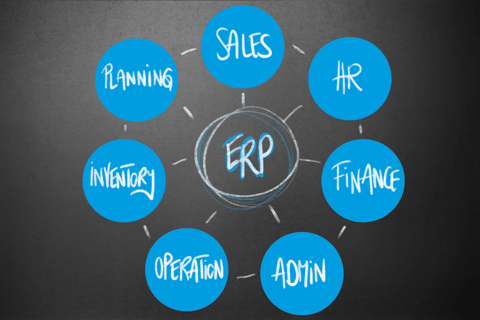Accelerated by the COVID years, but in progress for a long time, the digitalization of companies concerns all sectors of activity. Driven by public authorities, more and more companies are launching ERP* projects. The principle is logical, even obvious, to centralize all the information of a company.
Unfortunately, it often happens that the results are not up to expectations… and investments…
*ERP: Entreprise Ressource Planning
From Excel to ERP for quality control
In many companies, each department still uses different Excel files to manage its activity: sales, production, billing, accounting, HR, quality control, etc.
Quite quickly, because of legal obligations or the relationship with the accounting firm, an invoicing and accounting software is set up. It is often the first software in place in companies.
Then, we feel the need to structure the stocks and the production, hence the implementation of a first simple ERP. This is the real purpose of ERP.
For its part, the sales department works with Excel files to track prospects and ongoing projects. Eventually, it is possible to set up a real CRM (free version) which allows to structure the information.
Obviously, these multiple Excel files and independent systems have their drawbacks. Nevertheless, it works. But one day, the company must be digitized and a new ERP must be implemented…
The idea of consolidating all Excel files into a new ERP is beautiful…. But isn’t the best often the enemy of the good?
THERE IS NO SOFTWARE THAT DOES EVERYTHING RIGHT FOR CHEAP.
Correction:
THERE IS NO SOFTWARE THAT DOES EVERYTHING RIGHT. Period.
Is implementing an ERP system good news?
Eventually, yes. But it’s a long-term project that often takes 12 to 24 months and at the end of which no one is unscathed… and often fully satisfied with the result.
Step 1 : Specifications of everyone’s desires.
Step 2 : Formalization of the specifications.
Step 3 : Adjustment to the budget.
Step 4: Delivery of an ERP that does less than expected and is heavier to handle
At the beginning, we imagine an ERP that will be able to solve all of the company’s problems, or even an ERP that does our work…
Everyone determines their needs and specifications. Then we have to compile everything and write a global specification and start consulting consultants… At least 12 months have passed when we start looking at the existing solutions.
And of course, there is no such thing as an ERP that can do everything for every industry.
You need to find the ERP for your industry and the core modules that fit your business.
Sometimes the software will dictate your organization. For a software that equips 90% of the largest companies in the world, this is not necessarily a bad thing, but not all companies are ready to change their organization for a software.
It is important to understand that in a company, each function has a specific reason to exist and has its own information and processes. An ERP system will have to standardize all these processes in order to function simply.
With each exception, the handling of the ERP becomes more complicated.
Above all, each modification you want to make to your ERP increases the cost of the software. IT is very complicated and expensive to develop. Each “just” or “simple” adds 5000€ of development
Very often, the ERP will cost twice as much as initially planned. But, obviously, the budget allocated to the project is not unlimited.
So, like a gangrene, little by little, we trim, we cut, we reduce the scope. And since it’s the ERP (!) we still want as many processes as possible to fit in. In this case, it’s the ergonomics that suffer or the functions that are half-developed.
And here you are, after 2 years, with your new ERP. Normally, the main functions are delivered, but it does not include all the company’s processes. Unfortunately, the ergonomics are not great, the visualization of information leaves something to be desired, but year after year, you will get used to it. Of course, each department keeps its Excel files in parallel and develops more and more of them, because your ERP is now frozen and no longer adapts to changes in your organization.
All that for this…
Our recommendation
Obviously, you need to implement an ERP adapted to your activity!
However, rather than dreaming of the ideal ERP to centralize everything and above all, which does not exist, prefer the best software for each of your functions.
ERPs are designed to manage your production flows, from raw material inventory to manufacturing orders to customer deliveries. However, for all other processes, prefer specialized software. Avoid having integrators develop custom modules. These modules are very expensive and above all limit the updates of the ERP core.
Preferably choose those that are open and can be interfaced with other software to share their data. Each function will have a more adapted software, without need of adaptation and the implementation will be faster. In a second step, you will focus on connecting the software.



